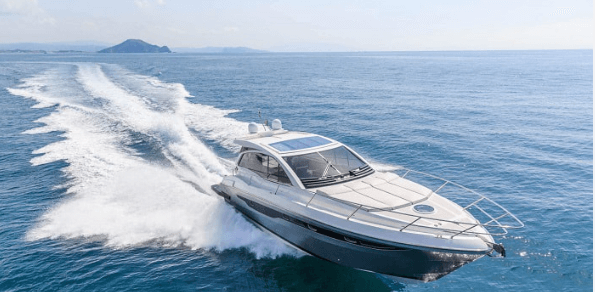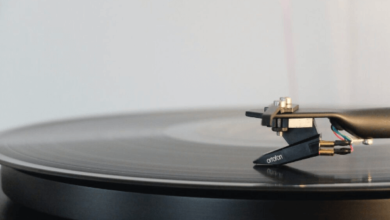Discover the key factors that determine a safe speed for your boat

Boating is an exhilarating activity that provides a sense of freedom and adventure. The feeling of wind in your hair, the sound of waves crashing against the hull, and the endless expanse of water all contribute to a unique experience that cannot be replicated on land. However, this sense of freedom can quickly turn into danger if proper safety measures are not taken.
One crucial aspect of boating safety is determining what speed is safe for your boat. The determination of safe speed for your boat depends on several factors such as vessel type, weight, horsepower, and weather conditions. Ignoring these factors can lead to accidents resulting in property damage or even loss of life.
Therefore, it is imperative to understand the technical aspects related to boating speed and regulations governing them. This article aims to provide detailed information on what determines if a speed is safe for your boat by assessing various parameters that affect boating safety and exploring ways to ensure safe operation at all times.
Understand Your Boat’s Capabilities
The determination of a safe speed for one’s boat is contingent upon an understanding of the vessel’s capabilities.
This includes considerations such as boat size and weight capacity, as well as engine power and fuel efficiency.
Knowing these factors is essential in determining the appropriate speed for your boat, as exceeding its capabilities can lead to dangerous situations on the water.
When selecting a speed, it is important to take into account any external factors such as weather conditions or water traffic that may impact your ability to operate the vessel safely.
Ultimately, a thorough understanding of your boat’s abilities will ensure that you can enjoy being out on the water while also maintaining safety for yourself and others around you.
Assess Water and Weather Conditions
Assessing water and weather conditions is crucial in determining the appropriate velocity for a vessel. To ensure safe operation, it is essential to consider various factors that may impact the safety of both passengers and crew members on board.
Here are four important aspects to keep in mind when assessing water and weather conditions:
1) Wind speed and direction – strong winds can create high waves, which can be dangerous for smaller vessels.
2) Water temperature – cold water can affect the body’s ability to function properly, leading to hypothermia or other medical emergencies.
3) Tides and currents – these natural phenomena can have a significant impact on a boat’s speed and direction of travel, especially in narrow channels or near shorelines.
4) Importance of experience- having prior experience navigating through different weather conditions is invaluable in making informed decisions about speed and route. Additionally, consulting weather reports before setting out on any journey ensures that you are aware of any potential hazards or severe weather alerts.
By taking all these factors into account, you can determine what speed is safe for your boat while ensuring everyone onboard remains secure.
Follow Local Regulations
Compliance with local regulations is imperative as it ensures adherence to legal requirements and maintains harmony in the maritime community, like following the rules of the road when driving.
It is important for boaters to obtain a boating license and be aware of local regulations regarding speed limits, no-wake zones, and other safety measures.
These regulations are put in place for the safety of all individuals on the water as well as protection of marine life and habitats.
In addition, enforcement measures should be strictly followed to avoid penalties or accidents caused by non-compliance.
Boaters should always abide by these rules to ensure a safe and enjoyable experience while on the water.
Maintain a Safe Distance from Other Boats
Maintaining a safe distance from other boats is crucial for ensuring the safety of all individuals on the water. It is important to communicate with other boaters and maintain situational awareness to avoid collisions or other accidents.
The recommended safe distance between two boats depends on various factors such as boat type, speed, weather conditions, and visibility. A general rule of thumb is to keep a distance of at least 100 feet from any other boats but it may vary in different situations. Boats travelling at high speeds should maintain an even greater distance due to the increased risk of collision and reduced reaction time.
Additionally, it is essential to consider potential hazards such as rocks, buoys, and other obstructions when maintaining a safe distance from other boats.
By following these guidelines and maintaining proper communication with fellow boaters, individuals can ensure their own safety while enjoying their time on the water.
Adjust Your Speed as Needed
Adapting your velocity to the surrounding conditions is an essential aspect of boating safety. Adjusting speed when necessary can help prevent collisions, reduce excessive wakes, and ensure that you have enough time to react to any unexpected situations.
Boat handling techniques for adjusting speed include using the throttle, shifting gears, or altering the angle of your boat’s trim tabs. It is important to always consider factors such as weather conditions, visibility, traffic density, and water depth when deciding whether to increase or decrease your speed.
In general, it is best to travel at a moderate pace that allows you to maintain control of your boat while still enjoying the freedom of being out on the water. Remember that even if you are an experienced boater with a powerful vessel, it is always better to err on the side of caution when adjusting your speed.
Use Common Sense
The subtopic of using common sense in boating safety encompasses several key points.
First and foremost, it is crucial to stay sober while operating a boat to ensure clear judgment and quick reactions in case of emergency.
Additionally, wearing a properly fitting life jacket can make all the difference should an accident occur.
Finally, maintaining a watchful eye on both the water and other boats can help prevent collisions and other dangerous situations.
These simple yet essential practices are critical for safe and responsible boating.
Stay Sober
Abstinence from alcohol consumption is a crucial factor in ensuring safe boating speeds, as impaired judgment and reaction times can lead to potentially hazardous situations on the water.
The effects of alcohol on the body are well documented, with even small amounts causing impairment that can lead to accidents and fatalities.
In addition to the physical effects, there are also legal consequences for operating a boat while under the influence of alcohol. Boaters who are found to be over the legal limit can face fines, suspension or revocation of their boating license, and even criminal charges in some cases.
To ensure safe boating speeds, it is important for all operators to stay sober and avoid consuming alcohol before or during their time on the water.
This not only protects themselves but also other individuals who may be sharing the same space.
By following this simple guideline, boaters can enjoy their freedom on the water while maintaining safety for all involved.
Wear a Life Jacket
Wearing a life jacket is an essential safety measure for boaters, as it can greatly reduce the risk of drowning in case of an accident or unexpected immersion in water.
The importance of wearing a life jacket cannot be overstated, and boaters should always ensure that they have the appropriate type and size of life jacket for their intended activity.
A properly fitting life jacket should be snug but not too tight, with all straps secured and adjusted to prevent any slipping or riding up.
It is also important to regularly check your life jacket for any damages or signs of wear and tear, as this can compromise its effectiveness.
By following these guidelines, boaters can greatly increase their chances of survival in the event of an emergency on the water.
Keep a Watchful Eye
Vigilantly monitoring the surroundings and being alert to potential hazards is crucial for boaters to ensure their safety on the water.
In addition, communication with other boats and passengers can also help prevent accidents.
When navigating at night, it’s important to have proper lighting and use radar or GPS systems to avoid collisions with other vessels or obstacles in the water.
It’s also recommended to travel at a slower speed when visibility is limited.
Boaters should always be prepared for emergencies by carrying necessary equipment such as flares, a whistle, and a radio for communication.
By staying aware of their surroundings and taking necessary precautions, boaters can enjoy their time on the water while keeping themselves and others safe.
Get Trained
Training on safe boating practices is essential for ensuring that you can properly navigate your vessel and select appropriate speeds based on the water and weather conditions. Without proper training, you may not be aware of the safety equipment required for your boat or how to effectively respond to emergency protocols in case of an accident.
A comprehensive boating course will teach you how to recognize hazards, read nautical charts, understand buoy systems, and interpret weather forecasts. Additionally, a boating course will instruct you on the principles of boat operation and maintenance, including the importance of regular checks on engine oil levels and fuel filters.
This knowledge not only improves your navigational skills but also helps prevent accidents by keeping your vessel in good condition. Ultimately, taking a boating course provides peace of mind while allowing you to enjoy the freedom that comes with being out on the open water.
Conclusion
When it comes to determining a safe speed for your boat, several factors come into play. Understanding your boat’s capabilities is crucial as it can only handle certain speeds depending on its size and design.
Additionally, assessing water and weather conditions before heading out is essential for ensuring safety on the water. Following local regulations regarding speed limits and maintaining a safe distance from other boats can also prevent accidents or collisions.
It is important to adjust your speed as needed based on changing conditions such as wind, waves, or crowded areas. Using common sense when operating your boat is key to avoiding accidents and keeping yourself and others safe.
One potential objection to these guidelines may be that experienced boaters may feel confident in their ability to operate at higher speeds even in adverse conditions. However, it’s important to remember that unexpected situations can arise, and following these safety measures can help prevent accidents regardless of experience level.
Ultimately, prioritizing safety over speed is crucial for enjoying a fun and incident-free time on the water.




